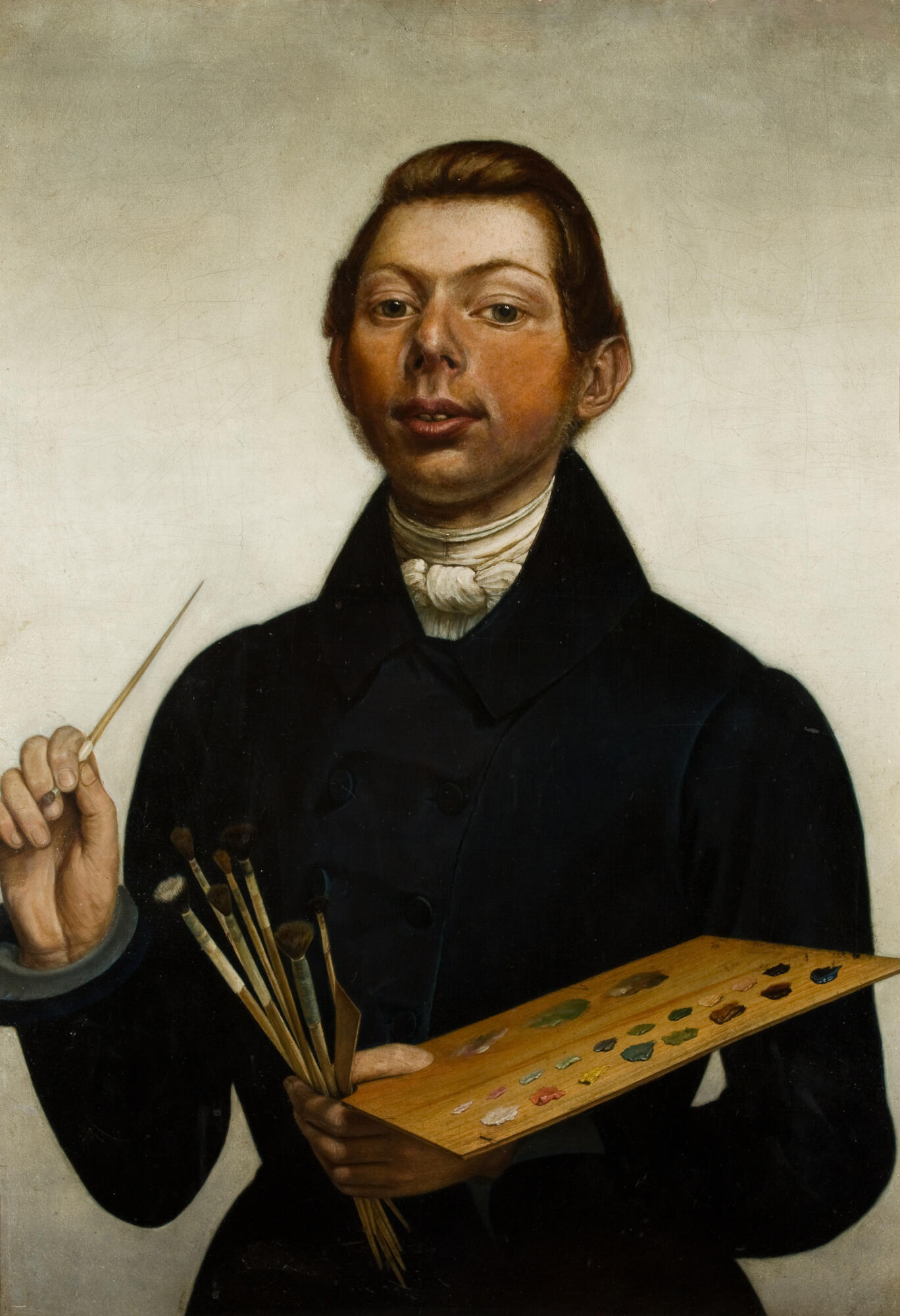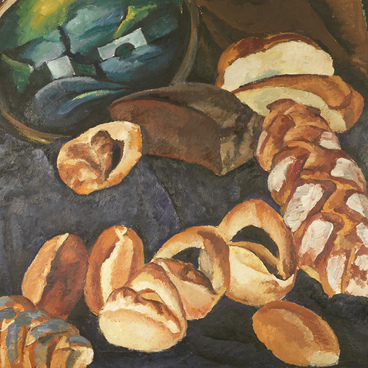Portrait painter Dmitry Charushin was born in Vyatka. From an early age, watching the work of his father, an icon painter, he dreamed of a career as an artist. In 1837, the artist-architect Alexander Vitberg came to exile in Vyatka. Vitberg was the author of the first, unfinished project of the Cathedral of Christ the Savior in Moscow, founded on Vorobyovy Hills in 1817 and the author of the Alexander Nevsky Cathedral in Vyatka destroyed in 1938. Vitberg was also the author of the fence and the portal of the Alexander Garden in Vyatka. During his exile, he opened a ‘home academy’ where his wife and eldest daughter taught children arithmetic, foreign languages, music, dance, good manners, and the artist himself gave drawing and painting lessons to those who wish. Dmitry Charushin also attended these classes.
One of the works of the aspiring artist is a self-portrait. Despite some timidity of the brush, the self-portrait attracts attention with its simplicity and spontaneity of conveying nature. In the painting, the artist did not manage to convey everything professionally accurate: the face turned out to be unnaturally dark in color, the figure was flat, and there was no space. But in the portrait one can read with what pride he portrayed himself, realizing his involvement in the artistic world, with what love he conveyed the brushes and the palette with paints.
Residents of Vyatka got acquainted with this work at an exhibition prepared for the arrival of the future heir to the throne Alexander II. In the St. Petersburg newspaper of 1837 it was noted that at the Vyatka exhibition, His Highness the Tsarevich paid special attention to the portrait of the self-taught tradesman Charushin. The artist was recommended to study at the Imperial Art Academy. Vitberg helped Dmitry Charushin gradually master the techniques of the realistic school of painting, based on the direct transfer of nature. Charushin entered the Imperial Art Academy, received the title of an out-of-class free artist, and until the end of his life painted custom portraits of residents of Saint Petersburg and Vyatka.
The collection of the Vasnetsov Brothers Art Museum in Vyatka contains four drawings and six pictorial portraits of Charushin, three of them are self-portraits.
One of the works of the aspiring artist is a self-portrait. Despite some timidity of the brush, the self-portrait attracts attention with its simplicity and spontaneity of conveying nature. In the painting, the artist did not manage to convey everything professionally accurate: the face turned out to be unnaturally dark in color, the figure was flat, and there was no space. But in the portrait one can read with what pride he portrayed himself, realizing his involvement in the artistic world, with what love he conveyed the brushes and the palette with paints.
Residents of Vyatka got acquainted with this work at an exhibition prepared for the arrival of the future heir to the throne Alexander II. In the St. Petersburg newspaper of 1837 it was noted that at the Vyatka exhibition, His Highness the Tsarevich paid special attention to the portrait of the self-taught tradesman Charushin. The artist was recommended to study at the Imperial Art Academy. Vitberg helped Dmitry Charushin gradually master the techniques of the realistic school of painting, based on the direct transfer of nature. Charushin entered the Imperial Art Academy, received the title of an out-of-class free artist, and until the end of his life painted custom portraits of residents of Saint Petersburg and Vyatka.
The collection of the Vasnetsov Brothers Art Museum in Vyatka contains four drawings and six pictorial portraits of Charushin, three of them are self-portraits.



